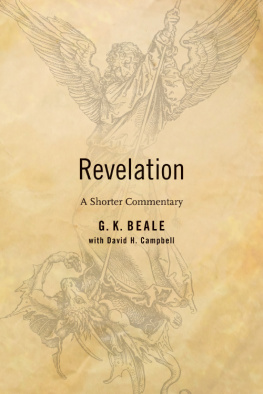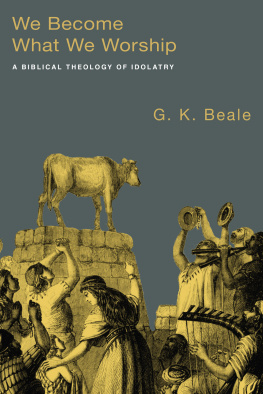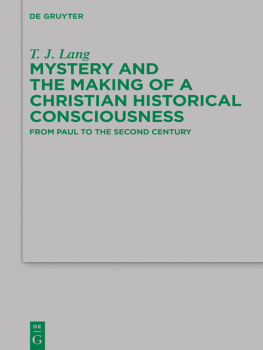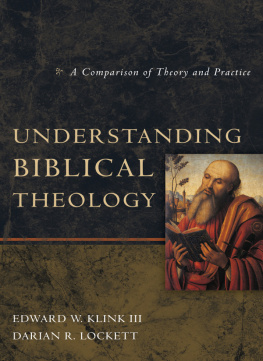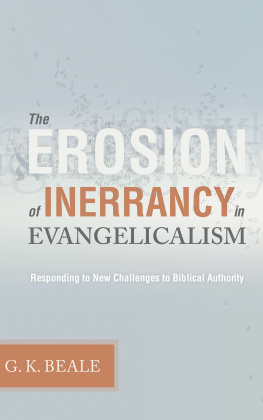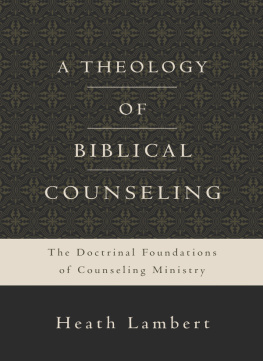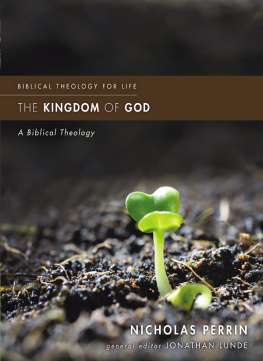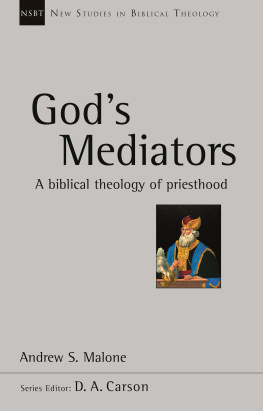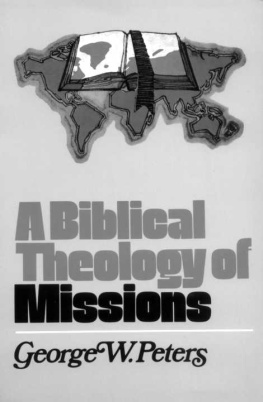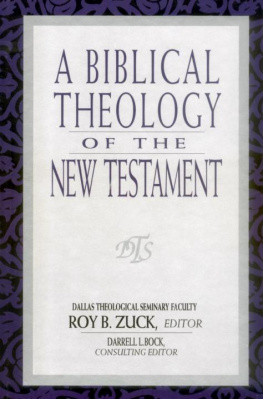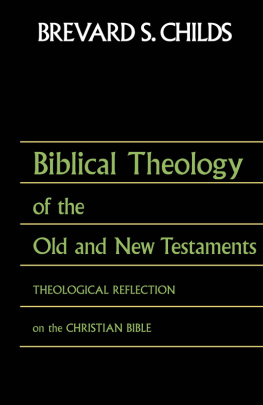G. K. Beale - Hidden But Now Revealed: A Biblical Theology of Mystery
Here you can read online G. K. Beale - Hidden But Now Revealed: A Biblical Theology of Mystery full text of the book (entire story) in english for free. Download pdf and epub, get meaning, cover and reviews about this ebook. year: 2014, publisher: InterVarsity Press / IVP Academic, genre: Religion. Description of the work, (preface) as well as reviews are available. Best literature library LitArk.com created for fans of good reading and offers a wide selection of genres:
Romance novel
Science fiction
Adventure
Detective
Science
History
Home and family
Prose
Art
Politics
Computer
Non-fiction
Religion
Business
Children
Humor
Choose a favorite category and find really read worthwhile books. Enjoy immersion in the world of imagination, feel the emotions of the characters or learn something new for yourself, make an fascinating discovery.

- Book:Hidden But Now Revealed: A Biblical Theology of Mystery
- Author:
- Publisher:InterVarsity Press / IVP Academic
- Genre:
- Year:2014
- Rating:5 / 5
- Favourites:Add to favourites
- Your mark:
- 100
- 1
- 2
- 3
- 4
- 5
Hidden But Now Revealed: A Biblical Theology of Mystery: summary, description and annotation
We offer to read an annotation, description, summary or preface (depends on what the author of the book "Hidden But Now Revealed: A Biblical Theology of Mystery" wrote himself). If you haven't found the necessary information about the book — write in the comments, we will try to find it.
Hidden But Now Revealed: A Biblical Theology of Mystery — read online for free the complete book (whole text) full work
Below is the text of the book, divided by pages. System saving the place of the last page read, allows you to conveniently read the book "Hidden But Now Revealed: A Biblical Theology of Mystery" online for free, without having to search again every time where you left off. Put a bookmark, and you can go to the page where you finished reading at any time.
Font size:
Interval:
Bookmark:
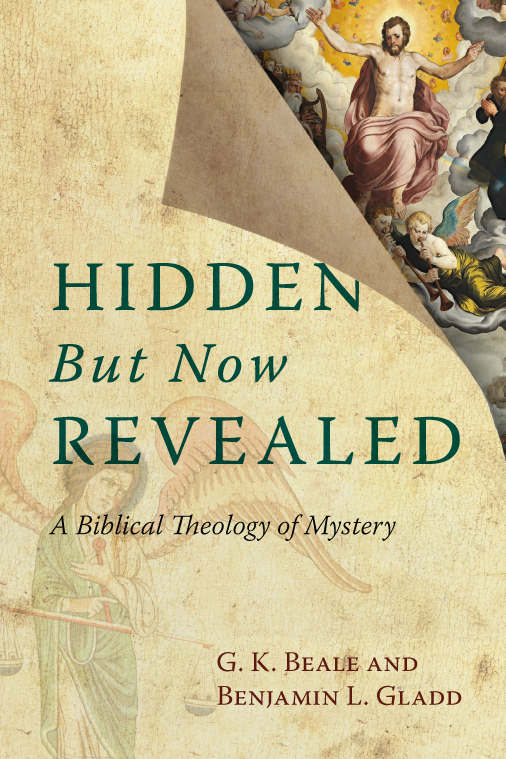
InterVarsity Press
P.O. Box 1400, Downers Grove, IL 60515-1426
World Wide Web:
2014 by G. K. Beale and Benjamin L. Gladd
All rights reserved. No part of this book may be reproduced in any form without written permission from InterVarsity Press.
InterVarsity Pressis the book-publishing division of InterVarsity Christian Fellowship/USA, a movement of students and faculty active on campus at hundreds of universities, colleges and schools of nursing in the United States of America, and a member movement of the International Fellowship of Evangelical Students. For information about local and regional activities, write Public Relations Dept., InterVarsity Christian Fellowship/USA, 6400 Schroeder Rd., P.O. Box 7895, Madison, WI 53707-7895, or visit the IVCF website at www.intervarsity.org .
All Scripture quotations, unless otherwise indicated, are taken from the New American Standard Bible, copyright 1960, 1962, 1963, 1968, 1971, 1972, 1973, 1975, 1977, 1995 by The Lockman Foundation. Used by permission.
Cover design: Cindy Kiple
Images:
angel: wynnter/iStockphoto
old paper: Rouzes/iStockphoto The Last Judgment by Pieter Jansz Pourbus at Groeningemuseum, Bruges, Belgium/LukasArt in Flanders VZW/The Bridgeman Art Library
ISBN 978-0-8308-9683-7 (digital)
ISBN 978-0-8308-2718-3 (print)

This book has been a long time coming. Both of us worked on this topic, to some degree, for our doctoral work. Greg Beale partly worked on how the book of Daniels conception of mystery connects to areas of Judaism and the book of Revelation. His dissertation was published as The Use of Daniel in Jewish Apocalyptic Literature and in the Revelation of St. John (Lanham, MD: University Press of America, 1984), and he then further explicated his view of mystery in the New Testament in a later book, Johns Use of the Old Testament in Revelation, JSNTSup 166 (Sheffield: Sheffield Academic Press, 1998). Ben Gladd, as a doctoral student of Greg Beale at Wheaton College, wrote a dissertation on how mystery in the book of Daniel influences early Judaism and 1 Corinthians, which was later published as Revealing the Mysterion: The Use of Mystery in Daniel and Second Temple Judaism with Its Bearing on First Corinthians, BZNW 160 (Berlin: Walter de Gruyter, 2008).
By combining our research on this subject, we believed that the project would be a natural fit. We asked InterVarsity Press whether they would be interested in publishing a biblical theology of mystery. They graciously obliged. At the beginning of the project, we were somewhat surprised that no one had attempted to write a complete study of mystery in the New Testament or to reflect on the biblical-theological implications of such a study. The topic seemed ripe for the picking. We soon realized why that may have been the case: the more we investigated the notion of mystery, the more difficult the project became. A quick search of the key word mystery (Greek mystrion) in the New Testament yields some interesting results. The term is nestled in discussions of key doctrines: the nature of the end-time kingdom (Mt 13 and par.), the crucifixion (1 Cor 2), the restoration of Israel (Rom 11), the relationship between Jews and Gentiles (Eph 3; Col 1), and so on. These texts are notoriously complicated in their own right and are the object of tireless debate among scholars. Meticulously working through these difficult texts required a considerable amount of time and energy.
Not only are the texts in question difficult to interpret, they also take center stage in how the two Testaments relate to one another. This is one of the reasons why mystery piques our interest: the New Testament writers employ the term mystery to signal a unique relationship between the Testaments. Our desire to launch this project lies in our conviction, though a minority view, that the New Testament authors, without exception, use the Old Testament contextually. That is, the New Testament authors respect to one degree or another the Old Testament authors meaning in the original Old Testament context. The concept of mystery is a relatively untapped avenue into this debate. Because this area of biblical hermeneutics is so heavily debated, even among evangelicals, we wrote this book with an eye on this debate.
To obtain a good overview of this book, we recommend that readers first read chapter one on the use of mystery in Daniel, as this chapter forms the backbone of the entire project and is indispensable. In each subsequent chapter, we make reference to this first chapter. After reading chapter one, we recommend that the reader read through the body of each chapter to get the overall flow of the argument before extensive examination of the footnotes. For those wishing for further hermeneutical reflection on how mystery functions in the New Testament use of the Old Testament, we have included as an appendix an adaptation of Greg Beales forthcoming essay on the cognitive peripheral vision of the biblical authors.
Our goal for this project is that the church would gain a greater appreciation for the concept of mystery and the intersection of the Old and New Testaments. The gospel itself contains both old and new elements that stand in continuity and discontinuity with the Old Testament.
Both authors are grateful for our wives, who continually illustrate Gods goodness to us. Indeed, they play an integral role in the marital mystery of Ephesians 5:31-32.
We would also like to thank the students who diligently labored on this manuscript: Josh Darsaut and David Barry.
Above all, we are grateful to God who gave us the desire to write this project and the energy to complete it. Our prayer is that this book would give glory to him alone.
English translations of Scripture follow the New American Standard Bible ( NASB ) unless otherwise indicated.
The edition of the Greek Old Testament that is used is Alfred Rahlfs, ed., Septuaginta, revised and corrected by Robert Hanhart (Stuttgart: Deutche Bibelgesellschaft, 2006). In Daniel there are two distinct Old Testament Greek translations known as Old Greek and Theodotion. Outside of Daniel, the Greek Old Testament will be referred to variously as the Greek Old Testament or Septuagint (sometimes abbreviated a the LXX). The English version of the Greek Old Testament cited is A New English Translation of the Septuagint (New York: Oxford University Press, 2007), unless otherwise noted. We emphasized key words or phrases in the NASB by underlining them, and we preserved the NASBs own italics that signal inserted English words with no formal Hebrew/Aramaic/Greek equivalent.
References to the Greek New Testament are from the Nestle-Aland Novum Testamentum Graece (Stuttgart: Deutsche Bibelgesellschaft, 1993). Our references to the Dead Sea Scrolls come primarily from the edition of F. G. Martinez, The Dead Sea Scrolls Translated (Boston: Brill, 1994); sometimes reference is made to The Dead Sea Scrolls Study Edition, ed. F. Garcia Martinez and Eibert J. C. Tigchelaar, 2 vols (Boston: Brill, 2000).
The primary sources of various Jewish works were ordinarily consulted, referred to, and sometimes quoted, in the following English editions: Mekilta de-Rabbi Ishmael, vols. 1-3, trans. and ed. J. Z. Lauterbach (Philadelphia: Jewish Publication Society of America, 1976); The Fathers According to Rabbi Nathan,
Font size:
Interval:
Bookmark:
Similar books «Hidden But Now Revealed: A Biblical Theology of Mystery»
Look at similar books to Hidden But Now Revealed: A Biblical Theology of Mystery. We have selected literature similar in name and meaning in the hope of providing readers with more options to find new, interesting, not yet read works.
Discussion, reviews of the book Hidden But Now Revealed: A Biblical Theology of Mystery and just readers' own opinions. Leave your comments, write what you think about the work, its meaning or the main characters. Specify what exactly you liked and what you didn't like, and why you think so.


